The topic of the rock carvings at Ballochmile in Ayrshire had cropped up soon after joining the Probus Club in Irvine, though I had then declined a kind offer to take me to their location. Some months later in what passes for mid-summer, it was resolved to explore the site. I had chosen a painting theme about ancient Scottish stone structures based on the Dun Beag Broch that looks confidently out over Loch Bracadale on the Isle of Skye. I had taken numerous photographs of the stones and now time was allowing me to use this material for an oil painting study. Would colour be enough to provide a theme? Would the addition of form be beneficial? How about the enigmatic Pictish characters? Perhaps they are too new. How about cup and ring marks? Perhaps they are too old. In some way a visit to the Ballochmyle carvings could help.
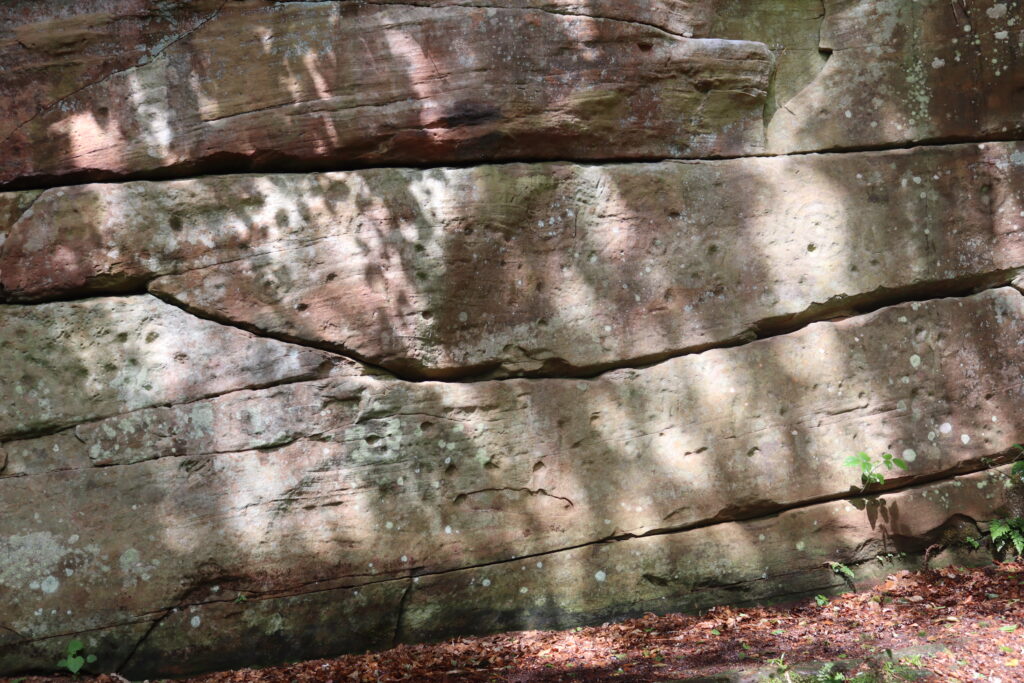
The actual visit to the Ballochmyle site came by stages. An ordinance survey map provided at the Probus Club by a helpful member provided the general whereabouts of where to turn off the main road from Mauchline. It was safer, however, as I found later to make the left turn off the main road going in a northern direction. A trip to the area soon after allowed me to walk along the main walkway at the Ballochmyle viaduct with its record breaking central arch of 181 feet over the river Ayr. Returning to the car, I saw the less travelled path down to the style that was the gateway to the carvings.
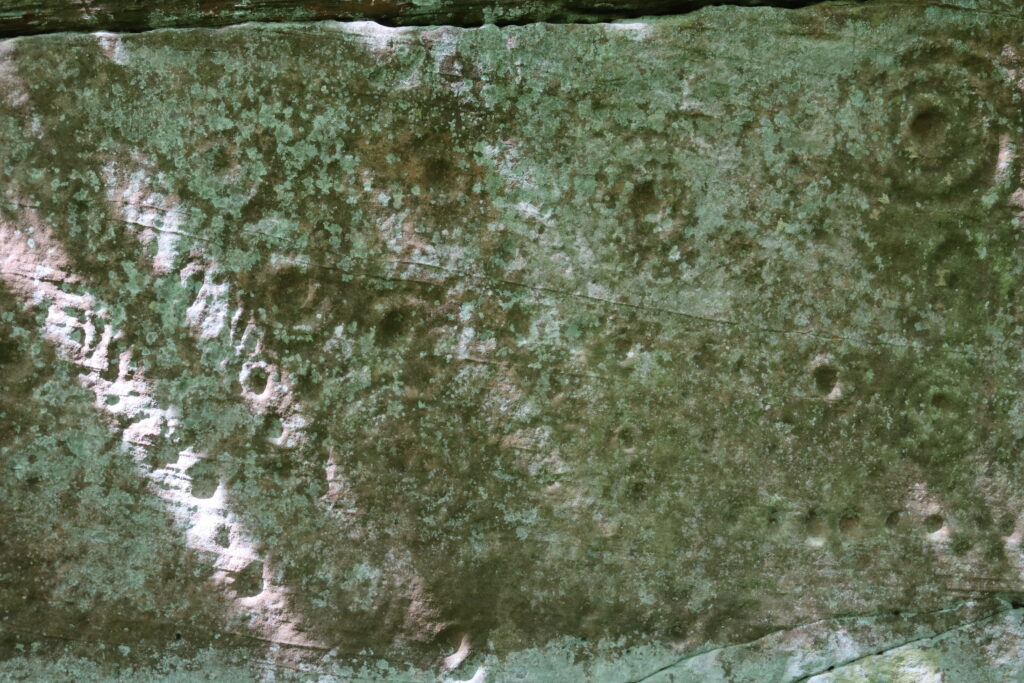
Returning the next day, in blustery and showery weather, I was soon down at the style and from then on every step warranted the utmost care and attention. While in dry weather the way ahead would have been of easy navigation, frequent heavy showers had rendered all surfaces difficult to navigate. The safest approach was to choose a way that afforded handholds from trees, and especially crossing the small but swollen stream. Wellingtons are advised. There is a certain skill in reading the landscape in some detail that must be an old, but essential attribute.
Rising up a slight slope, there it was – an exposed cliff face with visible cup and ring marks in red sandstone. . On occasion the sunlight filtering through the trees would highlight the surface features. I moved my Canon camera resolution to its highest value and began to record images.
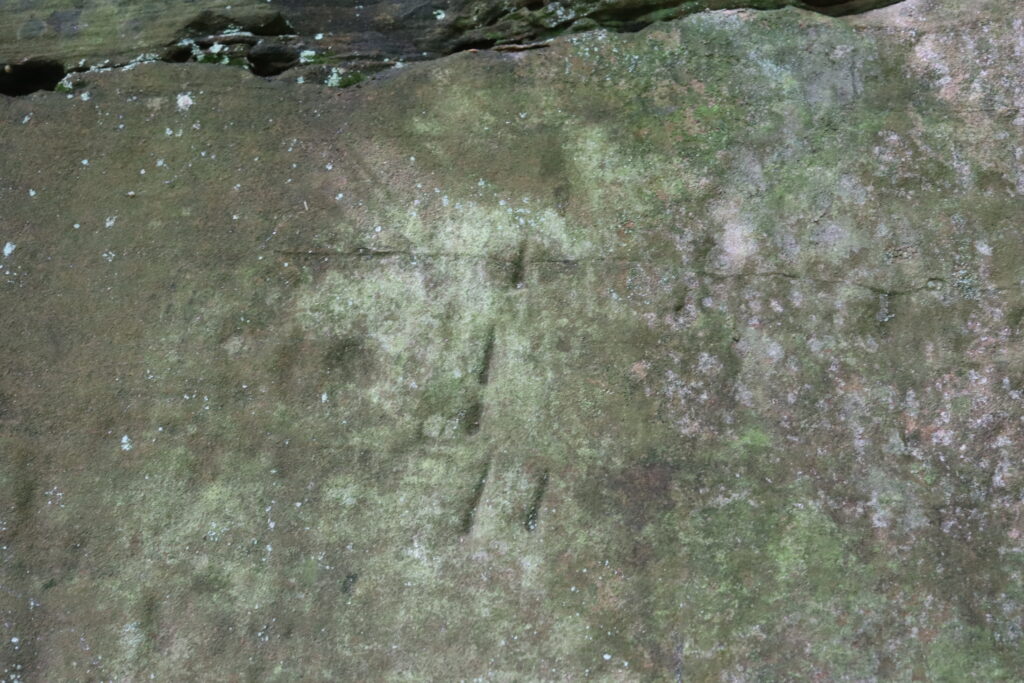
The markings were in what appeared a left and then a right section at a slightly higher level. After images were collected from the left ‘gallery’, images were recorded working along the right ‘gallery’. On retracing steps back to the left ‘gallery’, I reckoned the traverse to the lower level was hazardous on account of the slippy conditions and instead chose a more secure access route which took some time but which was a wise choice.
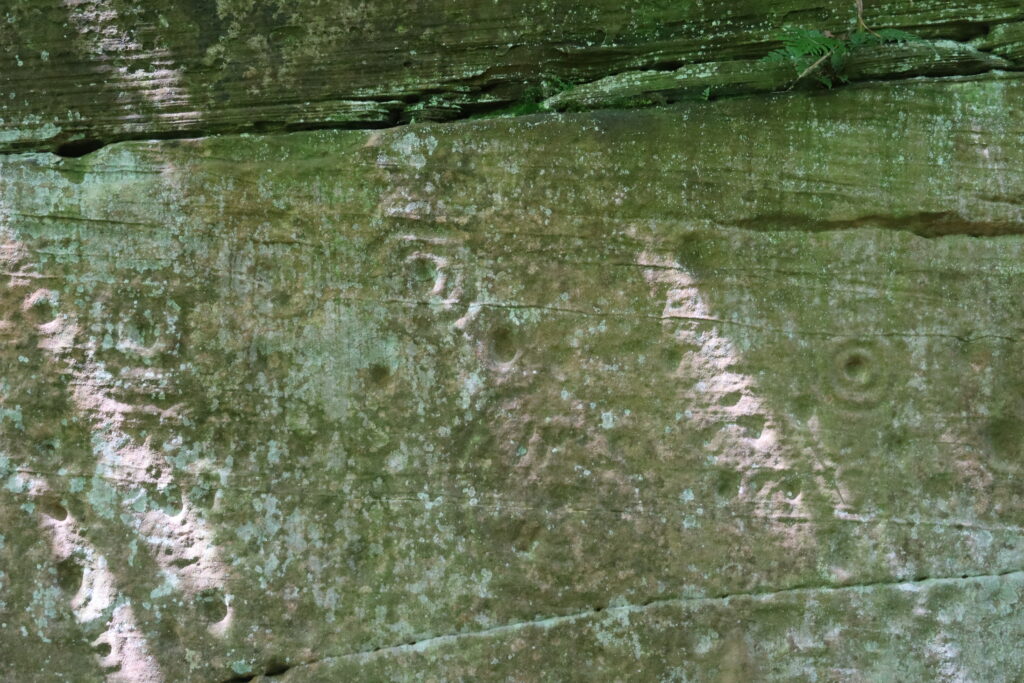
One feature of the stone into which the carvings were set was that it looked exceedingly ‘dry’. A higher block of sandstone above the main carving area was saturated with water and had a dark red/brown colouration. It was likely that the exposed stone surface with extreme dryness of its substance would have been deliberately chosen from an awareness of its superior properties to preserve carvings. I am sure than way back then they could ‘read’ the rock.
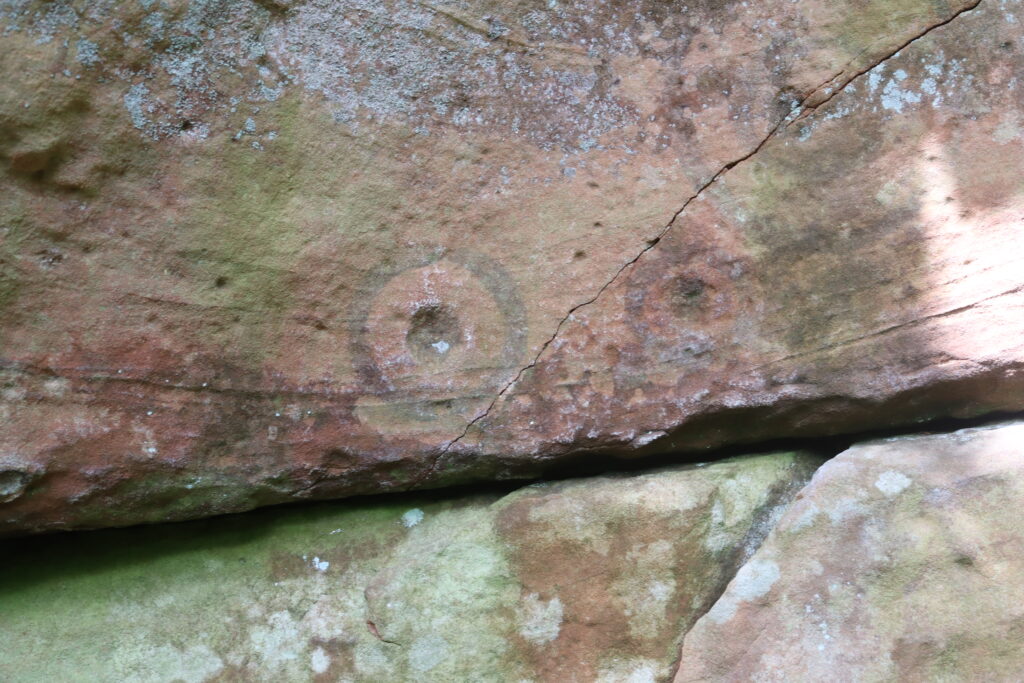
Recent precision laser profiling of the rock face has revealed that within most of the areas of interest, the entire surface is completely covered in designs – like a canvas that had been painted corner to corner. This is a site of staggering importance. If the ancient artisans ran out of space at the Ballochmyle location, did they then use another as yet undiscovered location in the river gorges nearby to continue their observances?
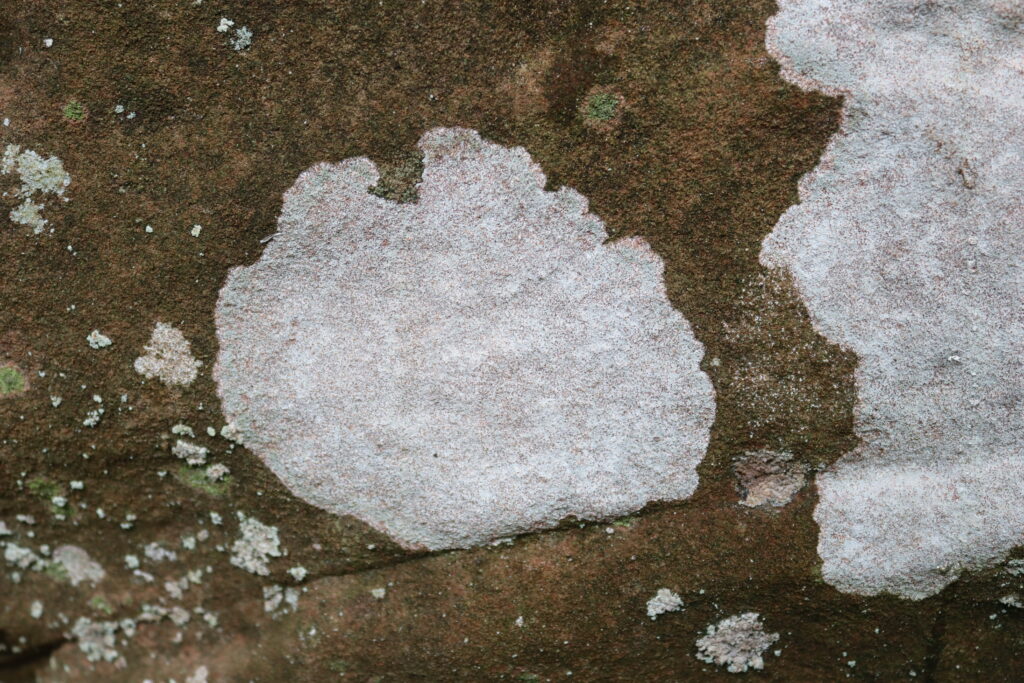
How long the process of creating the carvings took is uncertain. How many different individuals crafted here is unknown. What the symbols mean is a mystery though the geographical locations where they are found in Europe are extensive. The carvings, however, remind us of a distant past in a very different world and could have been created within a time period of between 6000 and 4500 years ago. They were, however, only recently ‘discovered’ in 1986.
Why not replicate the carvings from the laser scans as a very good museum exhibit? As far as the oil painting, the inspiration is still sinking in.